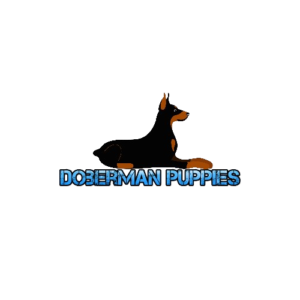Doberman Pinscher Puppies For Sale Near Me
The Doberman is large, muscular, and intelligent. Although they are known for being aggressive, they are loving and affectionate if socialized early. Their size, fearlessness, and intelligence make them great protectors and watchdogs.
We breed our Dobermans to have healthy puppies with good temperaments and sound bodies. Our puppies are whelped and raised in our home. We aren’t a large kennel where your Doberman is ignored. We have, on average, one litter per year. Your puppy will get 24/7 hands-on care from us, and as a result, your puppy will be socialized at a very early age to optimize temperaments for life in the real world.
These beautiful, magnificent dogs are faithful and make a great addition to the family. The Doberman is an intelligent, graceful, and devoted dog. With a keen intelligence, this renowned breed will keep you on your toes while displaying a consistent faithfulness that will warm your heart.
Doberman Pinscher Fun Facts
Doberman Pinscher Breed Guide

Temperament

Grooming

Activity Levels

History

Appearance

Shedding
Frequently Asked Questions
Doberman Pinschers Basics
Doberman Pinschers are more than just stunning guard dogs with sleek black coats. These intelligent and energetic companions hail from Germany, where they were bred in the 1800s by a tax collector seeking a fearless protector.
What breeds make a Doberman?
Dobermans are a unique mix of breeds, possibly including Pinschers, Rottweilers, Manchester Terriers, and Weimaraners. Today, they come in various colors – black, red, fawn, and blue – with distinctive rust markings. Isabella Fawn, a light fawn with a liver-colored cast, is the rarest Doberman color.
How long does a Doberman live?
Doberman Pinschers typically live for 10-12 years, filling those years with love, loyalty, and unwavering companionship.
Which breeds mix with Dobermans?
Doberman mixes commonly incorporate breeds such as German Shepherds (Doberman Shepherd), Labradors (Doberdor), and Rottweilers (Rotterman). These hybrid dogs blend Dobermans’ protective and loyal qualities with various characteristics from other breeds, yielding a diverse array of appearances and temperaments. Additional breeds that are frequently mixed with Dobermans include:
- Beagleman (Beagle + Doberman Pinscher)
- Doberdane (Doberman Pinscher + Great Dane)
- Dobergese (Doberman Pinscher + Portuguese Water Dog)
- Doodleman (Doberman Pinscher + Poodle)
What were Dobermans bred for?
Dobermans can be wonderful family dogs, especially in homes with older children. With proper training and socialization, they become loyal protectors of their families. However, their guarding instincts can make them wary of unfamiliar dogs.
When does a Doberman stop growing?
Dobermans typically attain their full height by 12 months, but their muscle development and filling may continue until they’re 18 to 24 months old. Although they reach their adult size relatively early, their physical and mental growth and development persist during this time. Proper nutrition and exercise during their growth phase are essential to ensure they mature into healthy and well-proportioned adults.
Are Dobermans hypoallergenic?
Dobermans are not classified as hypoallergenic. Despite having a short coat that sheds minimally, they still produce allergenic proteins in their dander, saliva, and urine, potentially triggering allergies in sensitive individuals. While individuals with mild allergies might tolerate Dobermans better than breeds with longer hair or heavier shedding, it’s essential to note that no dog breed is entirely hypoallergenic. Consistent grooming and cleaning practices can assist in reducing allergen exposure.
How many types of Dobermans are there?
Where do Dobermans come from?
What colors do Dobermans come in?
Dobermans are typically seen in a few standard coat colors, predominantly black and rust (black with reddish-tan markings) and blue and rust (blue-gray with rust markings). Less common variations include fawn (a yellow-gold with rust markings) and red (a solid reddish-brown). These hues often accompany the breed’s characteristic markings on their face, chest, legs, and tail. It’s worth noting that white Dobermans exist, but they are considered a genetic anomaly and are not acknowledged by breed standards.





